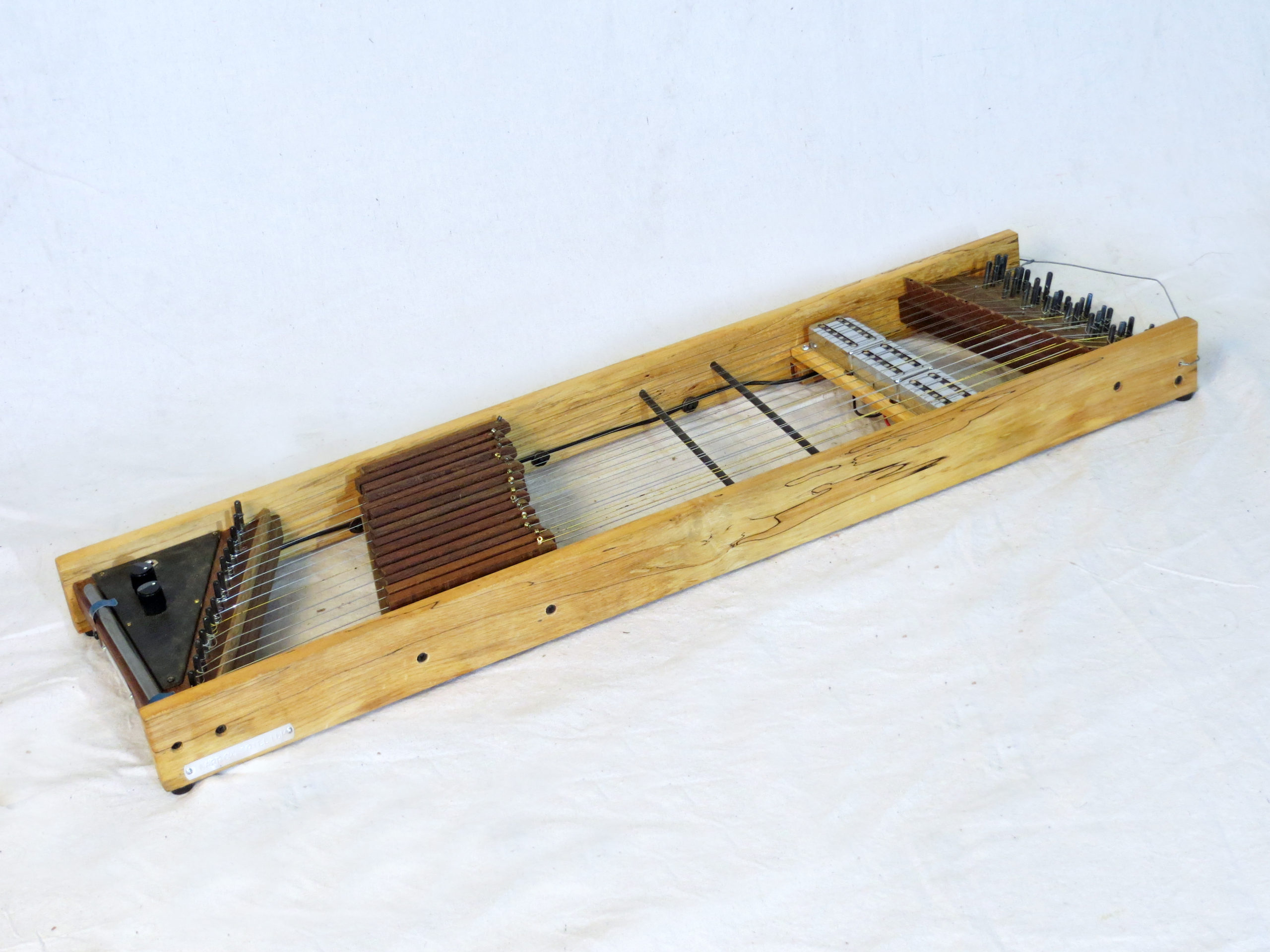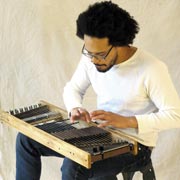Narrow Trillium
In Narrow Trillium, the tones are produced not so much by individual strings, but by multiple string segments in interaction, tuned to share resonances. Each multi-string group consists of three segments of different lengths and thicknesses, tuned in octaves. They’re joined together and interacting through a small piece of wood held only by the strings, not anchored to the body of the instrument. Because of the octave tuning, the fundamentals and all the harmonics of the two higher-pitch strings are shared by the lower string, and because they’re all physically connected, the lower string tends to vibrate sympathetically with any vibrations in the upper strings. The player normally plays the two higher pitched strings in each three-string group, but a pickup is positioned closest to the low-pitched string, where it can listen to all of those shared resonances as they manifest in that string. Slight manipulations of the stick and the higher strings result in chorusing effects between the shared resonances. There are fifteen of these conjoined string systems on the instrument. A diversity of exotic effects reveal themselves when you explore the possibilities.
In the video linked below, Narrow Trillium is the fifth of several instruments described.


